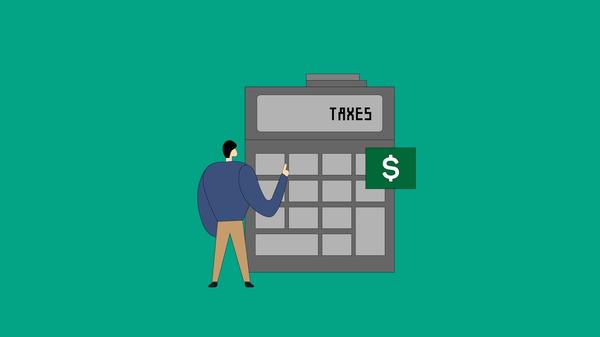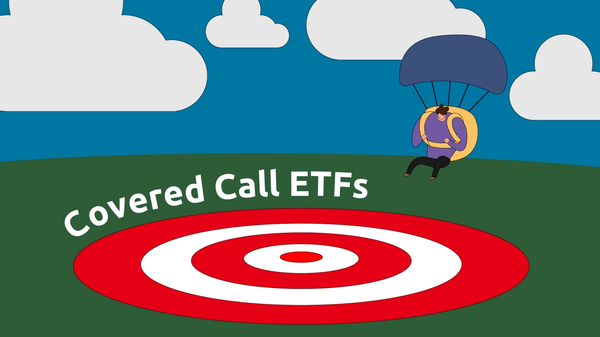In finance, acronyms can be overwhelming, so we’re going to look at two common options where many Canadians begin investing - Tax Free Savings Accounts (TFSAs) and Registered Retirement Savings Plans (RRSPs).
But what are the differences between the two? What are the benefits? Let’s look at the details of each.
TFSA Basics
Tax Free Savings Accounts are a great way to invest your money for short- or medium-term financial goals you want to hit before retirement. If you’re looking to buy a car or are planning a wedding for instance, a TFSA is a great option.
As the name suggests, TFSAs are tax-sheltered accounts, meaning any interest or capital gains you make within the account isn’t taxed. And if you’re setting aside money for a big upcoming purchase, a TFSA lets you access the money you need when you need it, without having to worry about withdrawal penalties or changes to your taxable income. It’s this flexibility and the ability to realize investment gains tax free that make TFSAs so appealing.
Another perk of a TFSA is the ability to carry-over unused contributions from previous years. And if you’ve taken money out of your TFSA, you’re able to replenish the amount you’ve withdrawn without penalty the next year.
Each year, the government of Canada determines the TFSA contribution limit. For 2020, the limit is $6,000. Over contribution could result in the amount being taxed, or liability for penalty. You can find out past year’s contribution limits here.
What do I need to start a TFSA?
To open a TFSA, you must be over 18 and have a Social Insurance Number (SIN). You can set one up through most financial institutions or by speaking with a financial advisor.
What types of investments can I put in a TFSA?
A TFSA can be made up of a variety of investments. These include Guaranteed Investment Certificates (GICs), Mutual Funds, Stocks, Bonds, and Exchange Traded Funds (ETFs).
Because TFSAs can be made up of different investments, there’s different potential for your money to grow. GICsand bonds provide a great counterbalance to Mutual Funds, Stocks, and ETFs. While the latter offer greater opportunity for high-interest returns, they’re also more volatile and subject to market fluctuation.
RRSP Basics
Registered Retirement Savings Plans are also a tax-sheltered investment, but they offer a unique benefit that TFSAs lack: tax deductions.
That means you can claim your RRSP contributions on your tax return (lowering the amount of tax you owe in a given year), but that there’s also less flexibility around making withdrawals before retirement.
Similar to TFSAs, your RRSP can consist of a mix of virtually any type of investment account you want including GICs, Mutual Funds, Stocks, Bonds, ETFs, and high-interest savings accounts.
RRSP & Taxes
As we touched on briefly above, one major advantage of RRSPs is that they’re tax deductible. So, what does that mean exactly?
Here’s an example to explain:
Let’s say you have an annual income of $65,000. If you contribute $5,000 to your RRSP, your total taxable income would be reduced from $65,000 to $60,000 for that year - effectively helping to lower your tax-bracket and boosting your tax refund by roughly $1,500 (though amounts can vary by province).
You will eventually owe income tax on your RRSP investment, but only at the time you make a withdrawal. It’s why you’ll want to lock up your RRSP until retirement, since you’ll likely be earning less as a senior and therefore owe a much lower tax rate on your investments. Withdraw too early, and you could owe more in taxes, especially if you saw a jump in your income compared to when you originally made your RRSP contribution.
It’s worth noting that there are a few exceptions when you can make an RRSP withdrawal early without repercussions. For example, if you’re looking to buy your first home or want to go back to school as an adult, you can make a tax-free withdrawal from your RRSP (under the Home Buyers Plan and Lifelong Learning Plan respectively) to help with the cost.
What do I need to start an RRSP?
No matter your age, as soon as you’ve completed your first tax return, you can start contributing to an RRSP. Your yearly contribution limit is 18% of your previous year’s income, up to a maximum determined by the Canada Revenue Agency. A breakdown of yearly deduction limits can be found here.
TFSA vs RRSP: Which one is right for you?
When considering investing in a TFSA or an RRSP, it’s important to consider your investment goals.
For shorter-term financial goals or savings you want to access easily, consider a TFSA that provides a balanced or more conservative portfolio. For longer term aspirations tied to retirement, look for an RRSP that offers a high-risk diversified portfolio consisting of ETFs and Stocks, as well as some other more stable investments.
TFSA vs RRSP: Overview
Some scenarios
Below are some simplified examples to highlight how your tax bracket can impact your bottom line.
Generally, if you are going to remain in the same tax-bracket for your life, then whether you choose to contribute to a TFSA or an RRSP won’t ultimately affect your bottom line. In a TFSA, your income is already taxed when you contribute.
In an RRSP, you receive a tax deduction at the time of deposit, but are taxed when you withdraw the money from the account. Essentially, you end up paying the same amount in taxes, it’s just a question of when.
Scenario 1. Your income remains in the same tax bracket
On the other hand, if you anticipate that you’re going to be making more money now than you will when you make a withdrawal (i.e. at retirement), an RRSP is probably the best option for you. Making a contribution to an RRSP will benefit you by reducing your taxable income, unlike the TFSA, in which you’ll still pay the same amount of tax at the front-end.
Scenario 2. Your income is higher now vs when you plan to make a withdrawal
Scenario 3. Your income is lower now vs when you plan to make a withdrawal
If you think you’ll be withdrawing your money before retirement - or at a time in the future when you’ll be making more money than you do now - a TFSA could be the better option.
*The above are simplified examples for illustrative purposes only.


